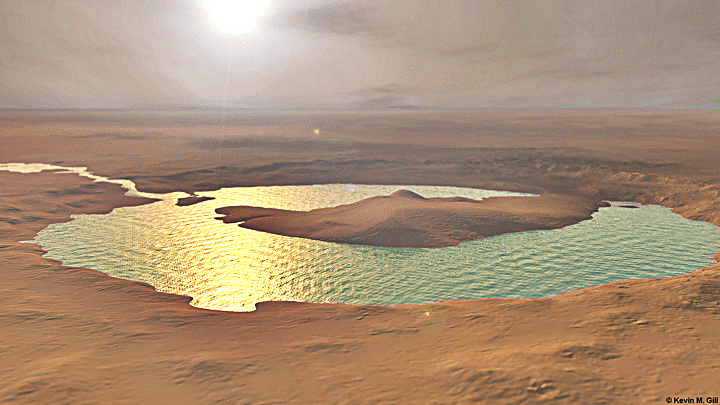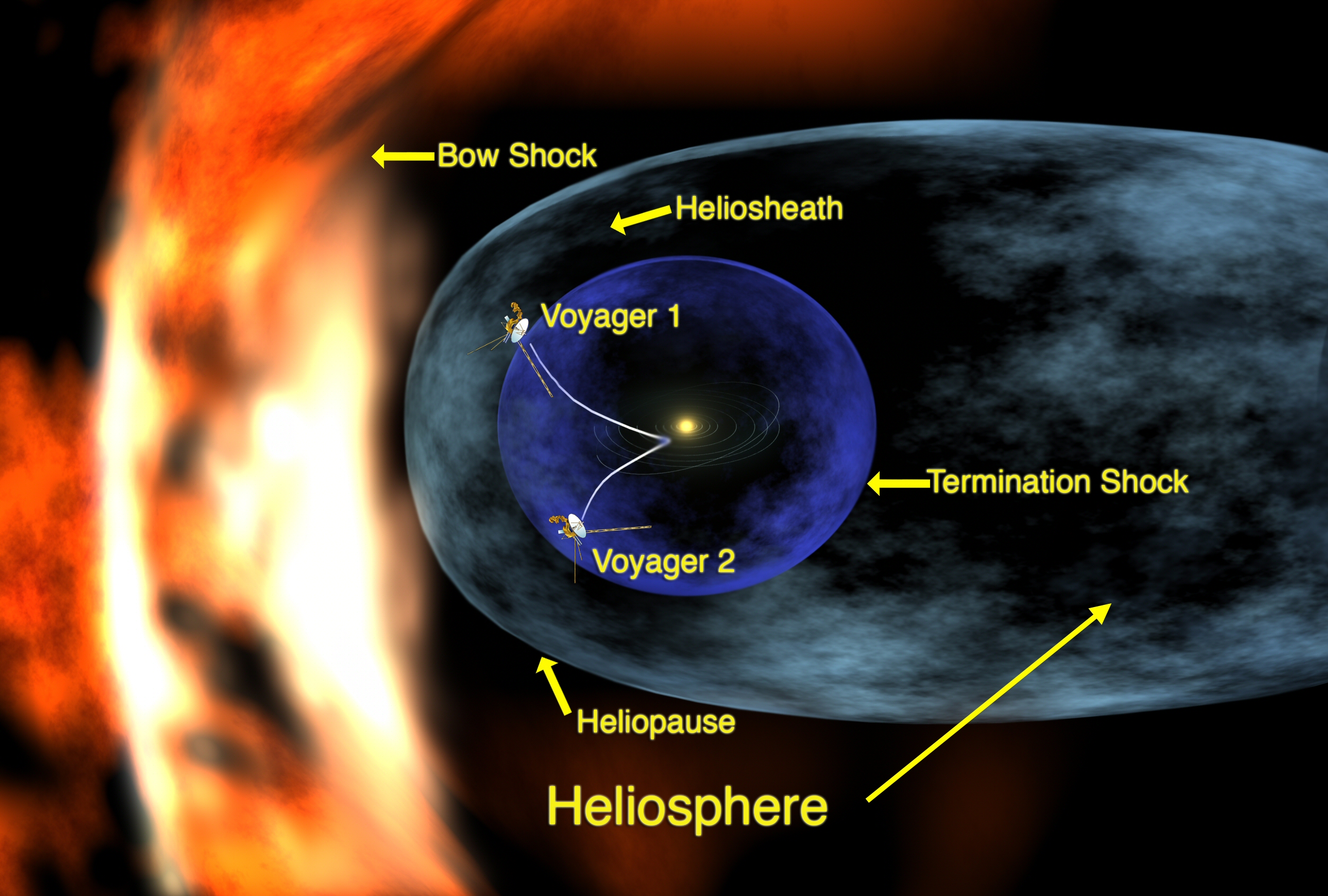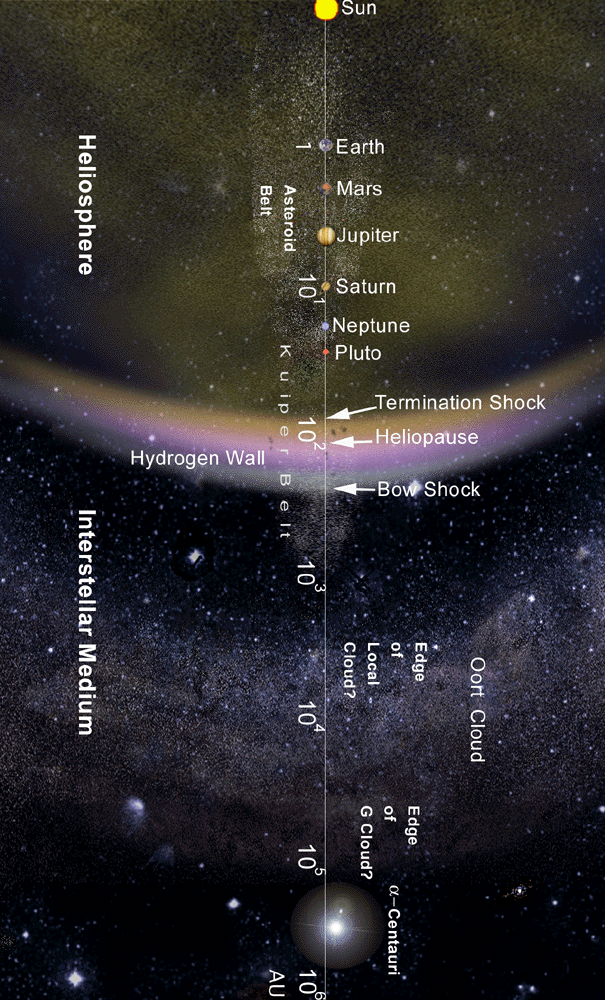The New
Horizons spacecraft has spotted an ultraviolet glow that seems to emanate from
near the edge of the solar system. That glow may come from a long-sought wall
of hydrogen that represents where the sun’s influence wanes, the New Horizons
team reports online August 7 in Geophysical Research Letters.
“We’re seeing the threshold between being in the solar neighborhood and being in the galaxy,” says team member Leslie Young of the Southwest Research Institute, based in Boulder, Colo.
Even before
New Horizons flew past Pluto in 2015 (SN: 8/8/15, p. 6), the spacecraft was
scanning the sky with its ultraviolet telescope to look for signs of the
hydrogen wall. As the sun moves through the galaxy, it produces a constant
stream of charged particles called the solar wind, which inflates a bubble
around the solar system called the heliosphere. Just beyond the edge of that
bubble, around 100 times farther from the sun than the Earth, uncharged
hydrogen atoms in interstellar space should slow when they collide with solar
wind particles.
That
build-up of hydrogen, or wall, should scatter ultraviolet light in a
distinctive way. The two Voyager spacecraft saw signs of such light scattering
30 years ago. One of those craft has since exited the heliosphere and punched
into interstellar space. New Horizons is the first spacecraft in a position to
double-check the Voyagers’ observations.
It scanned
the ultraviolet sky seven times from 2007 to 2017, space scientist Randy
Gladstone of the Southwest Research Institute in San Antonio and colleagues
report. As the spacecraft travelled, it saw the ultraviolet light change in a
way that supports the decades-old observations. All three spacecraft saw more
ultraviolet light farther from the sun than expected if there is no wall. But
the team cautions that the light could also be from an unknown source farther
away in the galaxy.
“It’s really exciting if these data are able to distinguish the hydrogen wall,” says space scientist David McComas of Princeton University, who was not involved in the new work. That could help figure out the shape and variability of the solar system’s boundary.
After New
Horizons flies past the outer solar system object Ultima Thule on New Year’s
Day 2019 (SN Online: 3/14/18), the spacecraft will continue to look for the
wall about twice each year until the mission’s end, hopefully 10 to 15 years
from now, Gladstone says. If the ultraviolet light drops off at some point,
then New Horizons may have left the wall in its rear view mirror. But if the
light never fades, then its source could be farther ahead — coming from
somewhere deeper in space, says team member Wayne Pryor of Central Arizona
College in Coolidge.










Post A Comment:
0 comments: